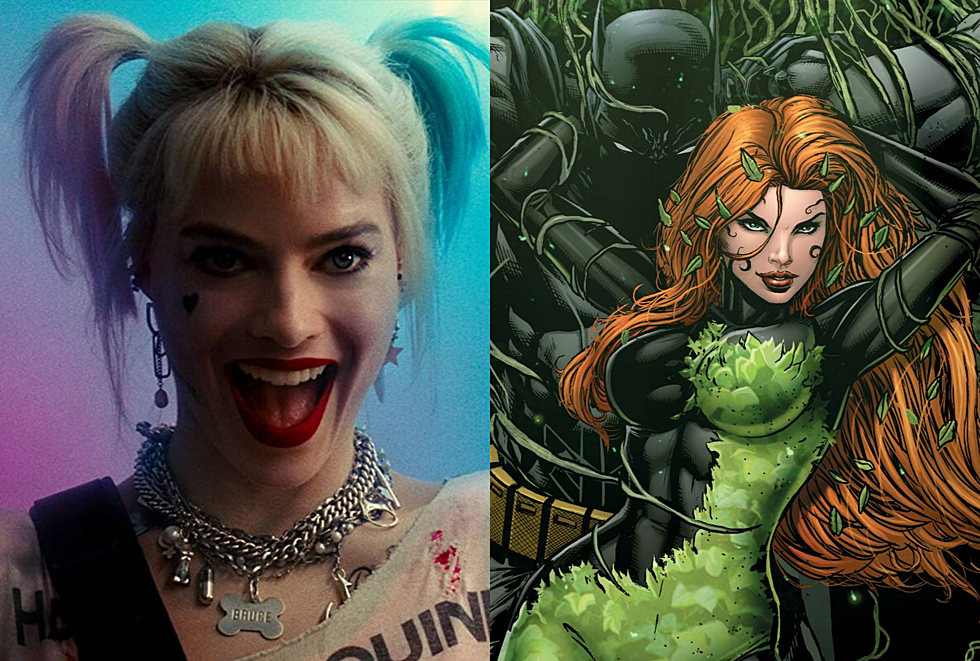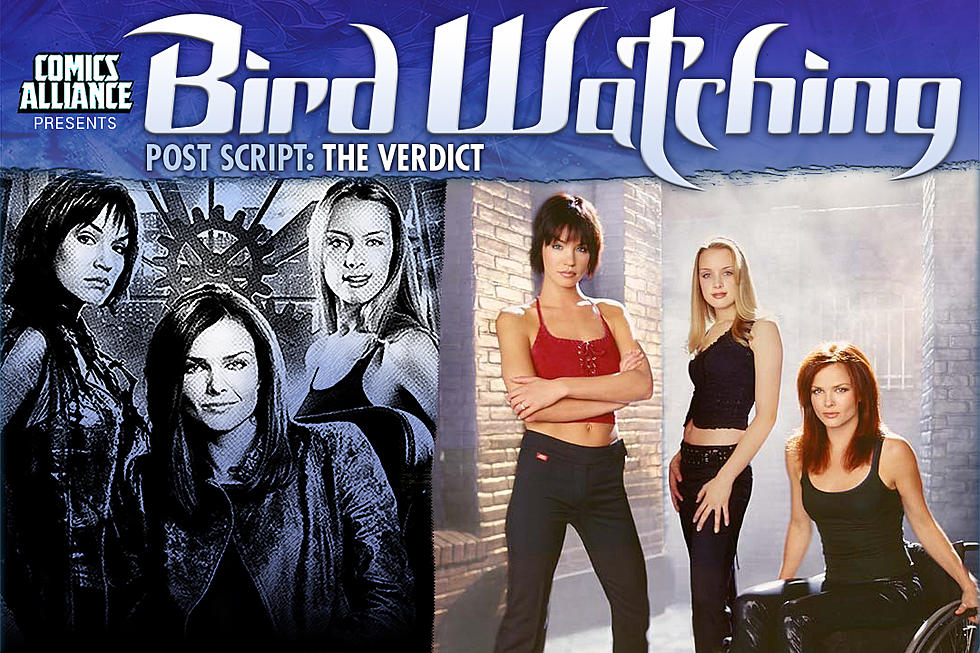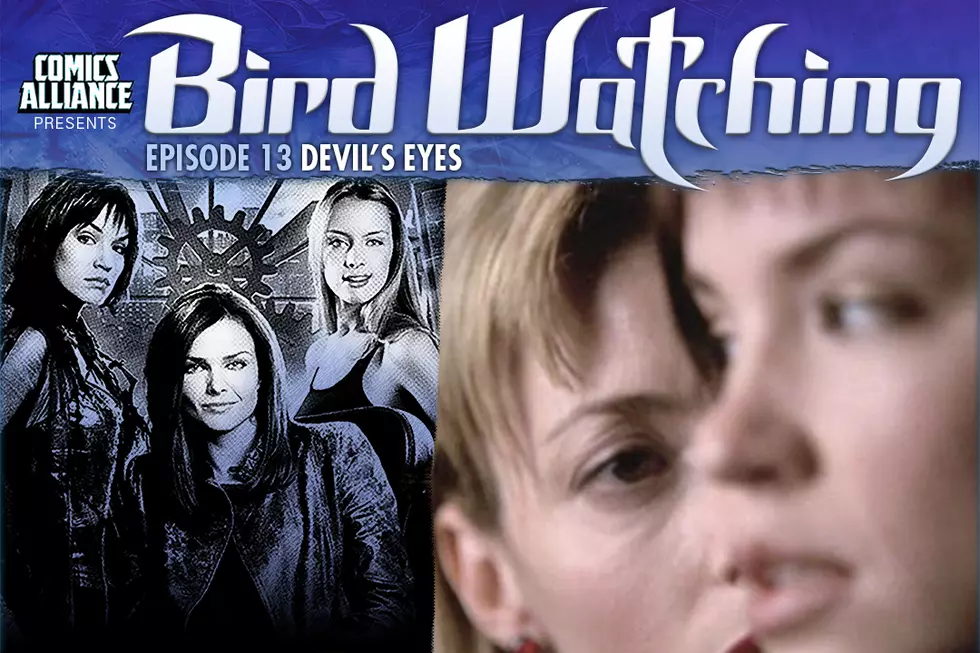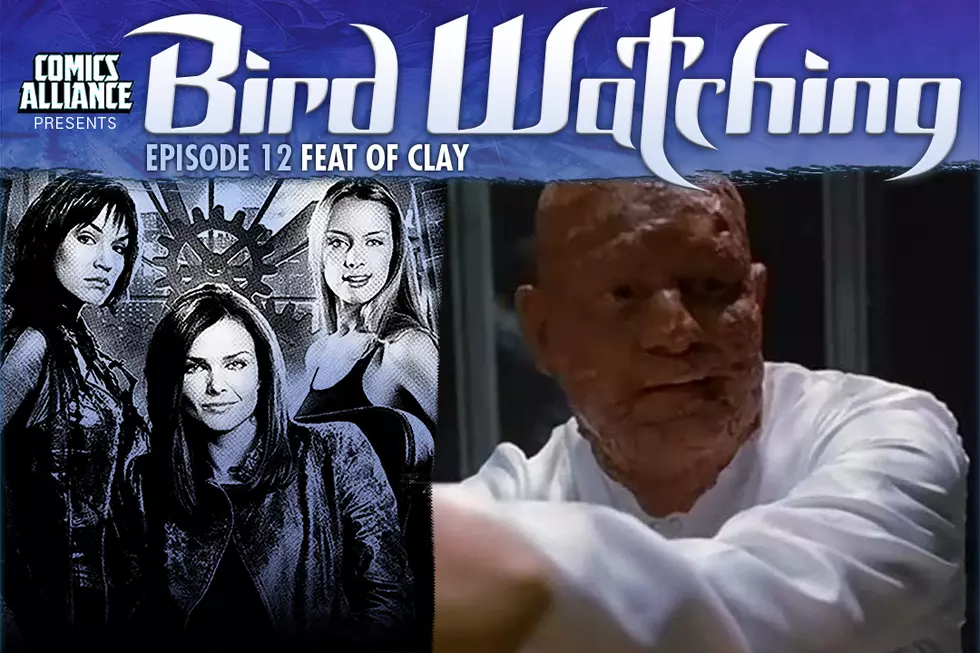
Hot Ink Reviews – Birds of Prey #1, Prince of Power #1, Siege #4, Killing the Cobra #1
ComicsAlliance reviews the biggest, best, and most interesting comics that hit the shelves this week. SPOILERS FOLLOW.
NEW BEGINNINGS - Birds of Prey 1 / Prince of Power 1

Two series get off to impressive starts this week. Gail Simone makes a long awaited return to writing DC's "Birds of Prey" after an absence of nearly three years, answering the prayers of countless fans who now might be wishing they had instead prayed for world peace or an end to poverty or even just something simple like a castle with a swimming pool than transforms into a spaceship. And over on the Marvel side of the shelves Fred Van Lente and Greg Pak once more return to the adventures of former Hercules sidekick Amadeus Cho in "Prince of Power," nearly a month since Herc's funeral concluded in "Hercules: Fall of an Avenger," a wait which I'm sure was as agonizing for some of you as it was for me. The anticipation's clearly palpable, so without any further ado here are my thoughts on both issues. "Birds of Prey" #1 relaunches the series after a it's been gone for nearly a year, and so a lot of this issue is taken up with reacquainting readers with the characters. They're all women who kick remarkable amounts of ass, so it's important to highlight the differences beyond that shared gift for putting enormous amounts of hurt on an assortment of crooks, terrorists and ne'er do wells. There's Black Canary, the asskicker who cares, and whose fondness for fishnet stockings tortures makes her hell on artists, requiring extra pencil mileage as if she's some kind of sexy version of The Thing. There's Oracle, whose asskicking days were cut short by a career-ending injury, now making her the brains of the team. And rounding out the core group there's Huntress, the one who puts up a tough exterior to hide the vulnerabilities deep inside, the kind that can't be solved by putting on thigh-high boots and kicking someone in the face.
In addition there's Lady Blackhawk, a.k.a. Zinda Blake, the time-displaced World War II vet with matching quaint speech patterns who prefers to do her ass-kicking from inside the cockpit of the nearest state-of-the-art aircraft. And then there are the newest additions to the group, the recently resurrected pair of Hawk and Dove. Dove sets herself apart by taking the unusual stance of solving conflicts with as little conflict as possible. She's an avatar of peace, you see. Hawk stands out by being the man of the group. And he seems to be compensating for being the only male lead by being the manliest man possible. To begin with, he's the avatar of war. He's so ripped that his muscles have other, smaller muscles on top of them. He believes he's been brought back to be God's soldier, which in this case means delivering a remarkable beating to a gang of bank-robbing, gun-toting cheerleaders. When he's done with that, he drinks beer at a bar while talking with older guys and showing the one emotion he's capable of: scowling.
Once we've been brought up to speed on the cast through a series of entertaining scenes, Simone introduces the conflict. Oracle's been given a mystery ultimatum. A series of files extensively detailing personal information of both heroes and villains has been sent to her, with the threat that it will all be publicly revealed if the Birds don't stop him. So it's like they've being threatened by some sort of evil Facebook. Okay, okay, that's a bit redundant. It's like they're being threatened by a differently evil Facebook.
On the one hand, their mystery opponent is decent enough to warn people before they go and make all their information public. On the other hand, Facebook hasn't threatened to kill anyone. As far as I know. Although if they had, they wouldn't tell anyone about it. They'd just place an item hidden deep in a settings menu somewhere marked "Please uncheck if you'd prefer we didn't methodically kill your family and loved ones" and set it to be checked by default. In any case, in order to avoid setting off a massive revenge-killing spree, the team accepts the challenge knowing they're walking into a trap. It's a fun return to the title, and the only criticism I really have is that its sometimes moves slowly as it starts to build momentum into the rest of the four part arc that relaunches the series as an ongoing story. But that's a minuscule complaint about a book I entirely enjoyed.
"Prince of Power," written by the team of Greg Pak and Fred Van Lente with art by Reilly Brown, doesn't need to build momentum in the same way as "Birds of Prey." Amadeus Cho has been a regular presence in the Marvel Universe for the past few years as the teenage whiz-kid sidekick of the boisterous demigod bruiser in "Incredible Hercules." What's great about "Prince of Power" is that we see Cho stepping up to fill the roles of both action hero and mastermind leader all on his own, and yet it feels like such a natural progression of the path the character's taken over the past few years. Wielding Hercules' indestructible adamantine mace and equipped with an array of technology designed by himself and Bruce Banner, Cho is a force to be reckoned with as shown by his opening fight scene against The Griffin.
I've always liked how artists have portrayed how Amadeus' advanced mind works through geometric shapes and equations overlaid on top of the action scenes, but Brown's work here is some of the finest examples of it yet. With the fight over, Amadeus returns to one of his many bases of operations as CEO of the Olympus Group and readers are introduced to two major plot elements of this four-part limited series. First there's Cho's effort to locate and bring back Hercules from wherever in existence he's been sent. And second there's a new foe, an intellectual challenge to Cho in the form of Asgardian Vali Halfling. It's a great issue, and it's striking to see how much Cho has grown into a full-fledged hero in his short time as part of the Marvel Universe. In an industry often criticized for only reusing the same characters over and over again, Amadeus Cho is the prime example of how to introduce and develop a brand new character in the right way, and how exciting that can be when it's done so well.
OLD BEGINNINGS - Siege 4 / Siege Embedded 4

"Siege" wraps up this week, marking the end of Marvel's latest crossover event, the conclusion of Norman Osborn's time in a poorly assigned role of power, and the start of the Heroic Age. It's more than just the end of "Siege", more even than the end of "Dark Reign." This seems to mark an end of, or at least a change to, the type of event cycle Marvel's been operating under for the past several years. And what's next seems to be a return to an older approach of not so massive crossovers and heroes who dip less often into the middle ground between good and bad, centered around the flagship Marvel characters (and big screen heroes) of Captain America, Iron Man and Thor.
I've been warming more and more to the approach taken in "Siege" as the event's gone on. Having a central title, supported by Brian Reed's excellent "Siege: Embedded," the Avengers tie-ins and the one-shot tie-ins of the past month made the event epic while not being overwhelming in its size. Tie-ins weren't necessary to appreciate the main story, but gave other characters their moments to shine against the backdrop of the world-changing events happening in Broxton, Oklahoma. Marvel knows the right way to put together an event comic at this point.
Admittedly that's not an easy call to make, as the only competition right now is putting together a jumbled mess of directionless narrative in between fight scenes against an undeveloped villain that only seeks to wipe out all existence and/or life. Anyone looks like a competent doctor when the alternative is a blindfolded toddler playing Operation who seems to have a fondness for buzzing noises. And no matter what, I'm never going to be as into an event comic as a well-handled run on a stand-alone title by a good creative team. Still, I think Marvel's handled "Siege" the right way, which isn't an easy task, and I'm interested to see how they handle smaller crossover events during the Heroic Age itself.
As for the concluding fourth issue of "Siege", I was surprised by how much of it occurs in the aftermath of the fight as a setup for what's next in the Marvel Universe. There's almost as much time devoted to that as there is spent concluding the battle itself. The other big surprise is the Marvel Universe's continuing path towards practical atheism by killing gods off at a prolific rate. Although I can't help but feel the latest death is a set-up for another surprise coming up later, as so much time has been spent building up the latest victim's character that it'd be a waste to simply get rid of them. I strongly suspect it's all part of a plan for a later dramatic return. My favorite part of the issue, though? One throwaway line where Wolverine admits to showing up to the latest Avengers recruitment meeting because they're offering free beer. If that's retconned into being reason that self-declared loner Wolverine is always a member of three to five super teams at once, I'll consider it a stroke of genius.
"Siege: Embedded," meanwhile, concludes with a fourth issue that cements its place as my favorite part of this event. Ben Urich and Will Stern's adventures chronicling Asgard have been a great read, and although I enjoyed the start more than the conclusion I was happy to see Volstagg returning for a larger role in the third issue. The events of "Siege" have had a special personal impact on this particular member of the warriors three, and seeing his reaction up close has been enjoyable. I can't in good conscience not like a book where Volstagg rides a hoverbike. And Urich's concluding monologue is a wonderful example of writer Brian Reed capturing the tone of the Marvel Universe as it heads out of "Dark Reign" and into "The Heroic Age."
YOU CAN'T SPELL VAMPIRE WITHOUT P.I. - Killing the Cobra 1

"Killing the Cobra" brings the story of Felix Gomez to comics for the first time. Gomez is a vampire. Who is also an embittered Iraq War veteran. Who is also a private investigator. Put together all three of those things, and from a mathematical standpoint it's entirely fair to assume that over the course of a 24-hour day, Gomez spends 36 hours brooding angstily. Gomez is the hero of a series of novels by author Mario Acevedo, beginning with "The Nymphos of Rocky Flats: A Novel," and continuing with such follow up works as "X-Rated Bloodsuckers," "The Undead Kama Sutra," and "Jailbait Zombies." I will admit that I haven't read any of those books. And I honestly mean that, I'm not quickly stating in hushed tones that I'm unfamiliar with those works of fiction while looking down in a desperate effort not to keep eye contact. But from what I glean from Amazon.com reviews and general praise for the books, Acevedo's novels sound like they're played for some horror and some laughs and filled with elaborate underground government and mystical conspiracy plots. Which is surprising, because that's all absent from the first issue of "Killing the Cobra," which is more of a straight action piece painted with a bloody horror brush.
Felix Gomez, vampire private detective, U.S. Army (Retired) heads undercover to Hong Kong on his latest mission from the U.S. government. Sent to help an investigation into an international heroin trafficking ring, Gomez is too late to save an unfortunate DEA agent from the clutches of the gang known as the Cobras. What he's not to late to do is kill most of said gang members in an act of bloody revenge. Then there's the standard catching up to speed for readers unfamiliar with the character. Gomez's guilt felt toward the accidental killings of civilians he committed into Iraq. His desire for self-punishment that led to him being transformed into a vampire. And his sexy female assistant who would willingly let him drink her blood, but he won't because he's a good vampire and doesn't drink human blood and there's absolutely no subtext to him staring at her neck while his fangs elongate and she closes her eyes and purses her lips, nope, nosiree.
We're also introduced to Jiang Chow, big time Cobra leader based out of Hong Kong and therefore Gomez's enemy. Jiang Chow sets a new standard for poor inspirational leadership by villains, as at one point he gathers his henchmen together and then proceeds to lavishly reward one and then kill another based solely on random chance. Come on now. There's bad evil mastermind-ery, in the form of instantly killing an underling who failed you or who makes the mistake of questioning you. But randomly killing off your mooks? That's just asking for a poorly motivated workforce where there's no incentive to perform and the odds of mutiny increase every day that passes. And it's not like drug cartel gang members have a reputation for being reliable, on the ball employees to begin with.
I'm willing to give Acevedo the benefit of the doubt and say that as a novelist writing his first comic, he may still be getting accustomed to the shorter serialized format and his series hasn't gotten a chance to show off its best side yet. Because for now, it seems to me like someone looked at Joss Whedon's "Angel" and said, "I like it, but I wish it took itself entirely seriously, its hero was an international spy, and he spent much more time brooding about all the tragic mistakes he made it in his past." I'll also admit that I'm generally hesitant about a series that takes itself so completely seriously. And when the plot summary of that series includes the words "vampire Iraq war veteran private detective," I'm doubly skeptical if it doesn't show off a sense of humor.
PARTING PRAISE
Grant Morrison and Chris Sprouse's "Batman: The Return of Bruce Wayne" was fantastic. Go read David Uzumeri's annotations and keep reading ComicsAlliance as we'll be doing more coverage of this book. Also out this week is issue 13 of Mike Carey and Peter Gross' "The Unwritten," another remarkable story beginning a new arc. This series is far and away my favorite book currently being released.
More From ComicsAlliance



![MVP: Who Is The Greatest Birds Of Prey Member? [Poll]](http://townsquare.media/site/622/files/2017/02/BOP-Votes.png?w=980&q=75)





